Recent Articles
Popular Makes
Body Types
Must-See Alternative Fuel Vehicles of the 2015 New York Auto Show
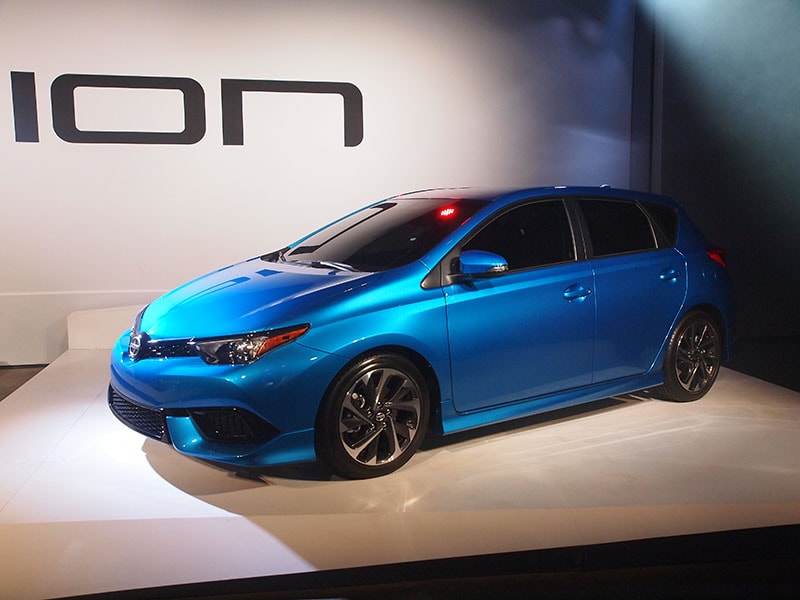
2016 Scion iM at the 2015 New York International Auto Show ・ Photo by Megan Green
Alternative fuel vehicles are rapidly becoming the rule rather than the exception, and as the technology has progressed so, too, has design language. Man of the newest entrants in to the category are more than capable of standing toe-to-toe with their gasoline counterparts and represent a major step forward in automotive engineering. Check out our top selections that are an absolute must-see at the 2015 New York International Auto Show.
2016 Toyota Mirai FCV
Unlike many car names, the 2016 Toyota Mirai FCV has a real meaning: “mirai” is Japanese for “future.” Apt for a car that doesn’t require fossil fuels. Instead, it uses hydrogen to create electricity in a fuel cell. This is the first FCV Americans can buy rather than lease. While emitting only water vapor, the Mirai midsize sedan packs a useful 153 hp and 247 lb-ft of torque. Hydrogen is stored under pressure in a strong-yet-light carbon fiber tank. Range is approximately 300 miles and it takes about five minutes to refill. Actually, “mirai” means “distant future.” Not so reassuring, considering how difficult hydrogen is to obtain. Most dispensers are in California and even those are far apart. But Toyota is still ramping up production in response to consumer interest.
What changed? This is an all-new model, but what has changed is the view of motoring’s future. While some makers are concentrating on battery power, Toyota’s interest and investment in hydrogen is telling.
When is it available? Summer 2015, only in California at first.
How much? $58,325, including destination, but before a California state rebate of $5,000. Or lease for $3,649 down and 36 monthly payments of $499.
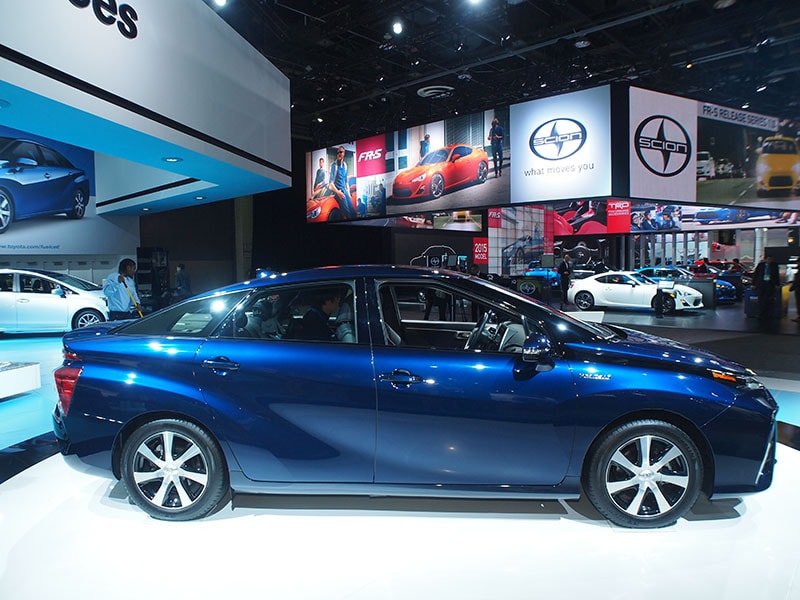
Photo by Megan Green
2015 Hyundai Tucson FCEV
The 2015 Hyundai Tucson FCEV is the first mass-produced electric vehicle powered by a hydrogen fuel cell in the United States market. Hydrogen enters the fuel cell and a chemical reaction produces electricity, which then goes to a battery and then an electric motor. It has a range of 265 miles, takes 10 minutes to refuel and the only emissions are water vapor. The drivetrain makes 134 hp and 221 lb-ft of torque, which is certainly enough for breezy around-town driving, while only a faint whoosh makes it into the cabin. Fuel cell vehicles might well play a greater part in the motoring world as fossil fuels become less desirable, but setting up the hydrogen delivery infrastructure is one of the big stumbling points at the moment.
What changed? Compared with a regular Tucson compact crossover, the option of all-wheel drive is not available. The FCEV version is also heavier because of specialized tanks that hold hydrogen under high pressure and the lithium-ion battery pack.
When is it available? Now, principally in California where there are at least some hydrogen filling stations.
How much? Lease only: $2,999 down and $499 a month for three years. Hyundai pays for the hydrogen.
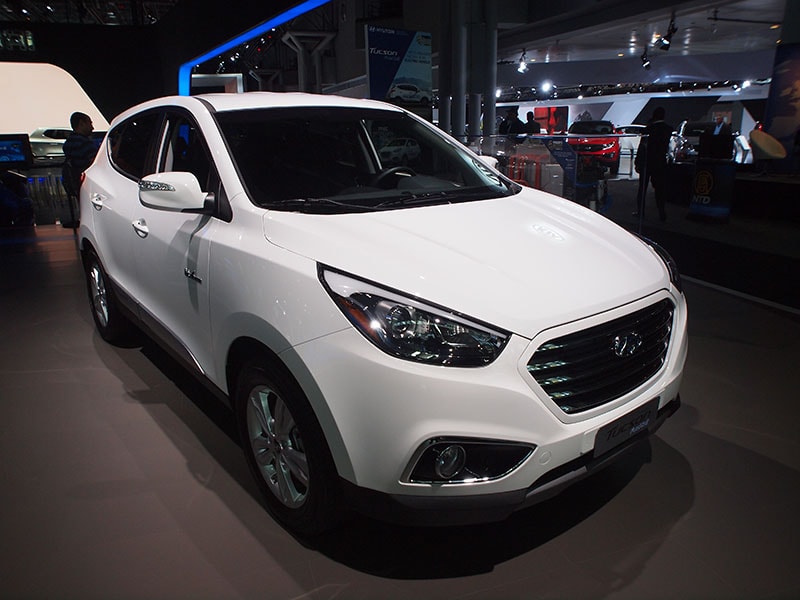
Photo by Megan Green
2015 BMW i3
The 2015 BMW i3 follows on from last year with just a few changes. This four-door, five-seat, battery powered vehicle (unless someone buys the range extender, a BMW motorcycle engine used as an onboard generator) offers a range of 85 miles and charging times as short as three hours. The i3 was designed as an electric car, with an aluminum tub where the drivetrain and suspension parts are housed, and a carbon fiber body sitting on top. It does its best to keep weight low, which in turn keeps the range useful. It’s roomy, practical and fairly classy inside, and it doesn’t take long to become acquainted with how the car behaves from power delivery (maximum torque is available virtually from standstill) or handling perspectives.
What changed? See below for the pricing. At least heated front seats, satellite radio and DC fast charging are now standard.
When is it available? Now.
How much? Sadly, but perhaps inevitably, the price has gone up: by $900 on the base model. And even destination charges have grown by $25. So the 2015 BMW i3 starts at $43,350, including $950 destination fee.
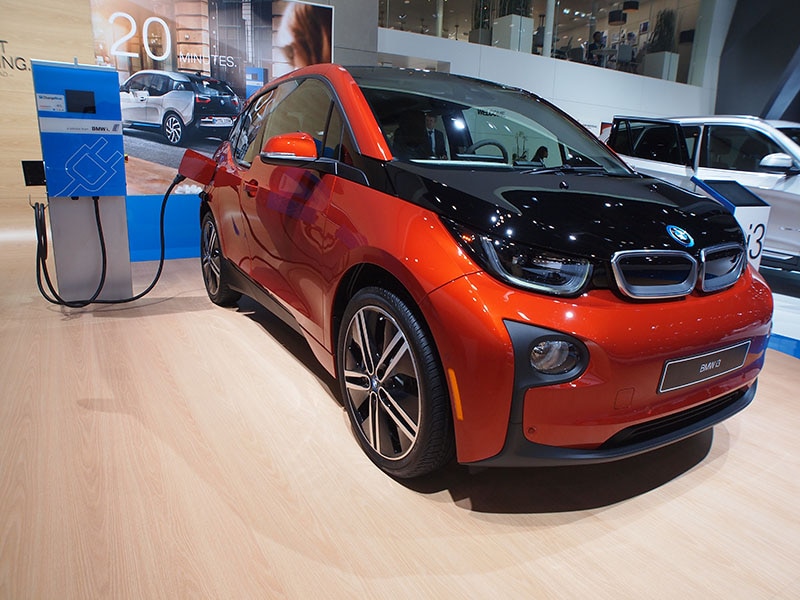
Photo by Megan Green
2015 BMW i8
By the old rules, the 2015 BMW i8 shouldn’t exist. How could a car with a 1.5-liter three-cylinder engine qualify as a sports machine and cost six figures? These are the new rules: lightweight, sophisticated materials work with hybrid drivetrains to provide breathtaking performance in a stunning package while still being eco-friendly. Like the i3, this car has a carbon fiber passenger cell over an aluminum tub that accommodates the drivetrain, suspension, battery pack and crumple zones. It’s a revolutionary way of building a car. The electric motor and turbocharged gasoline engine combine for a standstill-to-60 mph time of just four seconds, or cooperate to provide a range of 330 miles. And being a BMW with 357 hp and 420 lb-ft of torque, it’s naturally great fun to drive.
What changed? No changes in the car since its introduction last year. Perceptions of plug-in hybrids, however, are another matter.
When is it available? Now.
How much? $137,450, including $950 destination. New rules or not, it’s still a bit pricey.
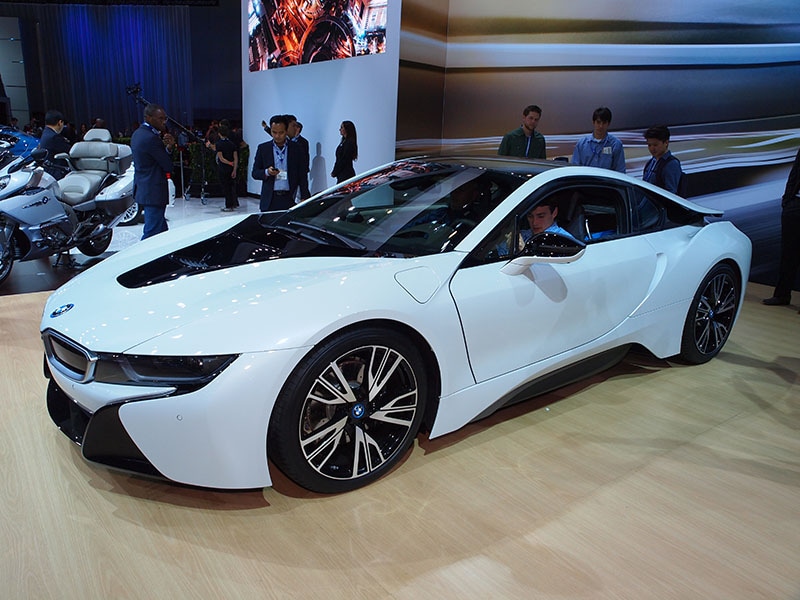
Photo by Megan Green
2015 Toyota Highlander Hybrid LTD Platinum
For anyone who wants a hybrid Highlander, the 2015 Toyota Highlander Hybrid Limited Platinum is their most expensive option. Without the Platinum package, the high-specced Limited is still as low as it gets for this fuel-sipping, seven-seater, midsize crossover. The rear wheels are turned by one electric motor, while the fronts receive drive from another electric motor and a 3.5-liter V6. Fuel consumption is EPA-rated at 27/28/28 mpg (city/highway/combined). Limited brings most of the swish stuff like 19-inch alloys, leather, three-zone climate control, blind spot warning, puddle lamps; Platinum adds a panoramic sunroof, heated steering wheel and heated second-row captain’s chairs, pre-collision system, radar-based cruise control, lane departure alert, and automatic high-beam headlights.
What changed? Toyota’s decision to only make the hybrid Highlander available in range-topping form.
When is it available? Now.
How much? $50,875 including destination charges.
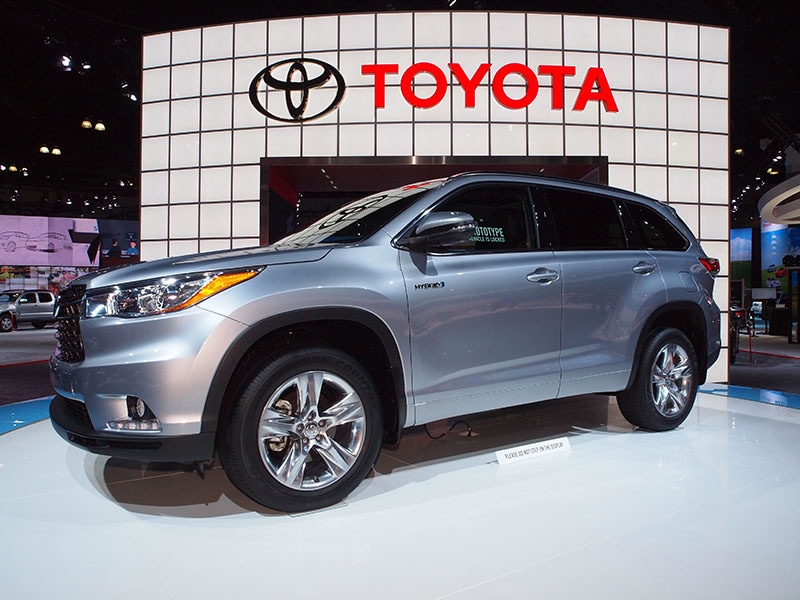
Photo by Megan Green
2016 Mitsubishi iMiEV
The 2016 Mitsubishi i-MiEV (Mitsubishi Innovative Electric Vehicle) moves into its new model year, having skipped 2013 and 2015, with standard equipment that includes heated front seats and side mirrors, power accessories, leather-trimmed steering wheel and shift knob, plus keyless entry. This lithium-ion battery powered subcompact hatchback requires seven hours to charge at 240 volts and the EPA estimates its range at 62 miles, achieving an equivalent of 112 mpg combined. These less-than-flattering figures and humble power numbers of 66 hp and 145 lb-ft of torque have no doubt led to the modest sales so far. But it is the most affordable electric car on the market.
What changed? A new seven-inch touchscreen navigation system with real-time traffic and 3D mapping is now available.
When is it available? Now.
How much? From $23,845 including $850 destination charges, but before a $7,500 Federal tax credit and any state credits.
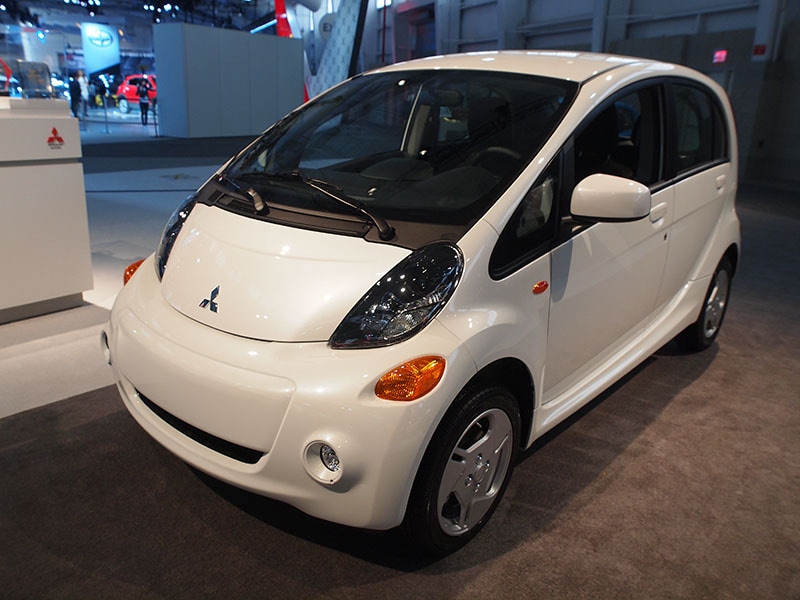
Photo by Megan Green
2016 Chevrolet Malibu Hybrid
Joining the redesigned standard Malibu mid-size sedan is the all-new 2016 Chevrolet Malibu Hybrid. A more advanced 182 horsepower, 1.8-liter four-cylinder gasoline/electric powertrain borrowed in part from the Chevrolet Volt highlights ensures startling fuel mileage for the four-door family car, which is rated at 48-mpg in city driving and 45-mpg on the highway (for a total of 47-mpg combined). This would put the Malibu Hybrid at the top of the non-plug-in mid-size class, although you have to wonder if a wall-socket-friendly version of the car isn't coming soon given its Volt roots. Like the gas-only version of the car, the Malibu Hybrid is larger and more stylish than the 2015 model.
What’s changed The Malibu Hybrid is all-new for the 2016 model year, and posts class-best fuel mileage.
When is it available? Third quarter of 2015.
How much? Pricing has yet to be released for the 2016 Chevrolet Malibu Hybrid.
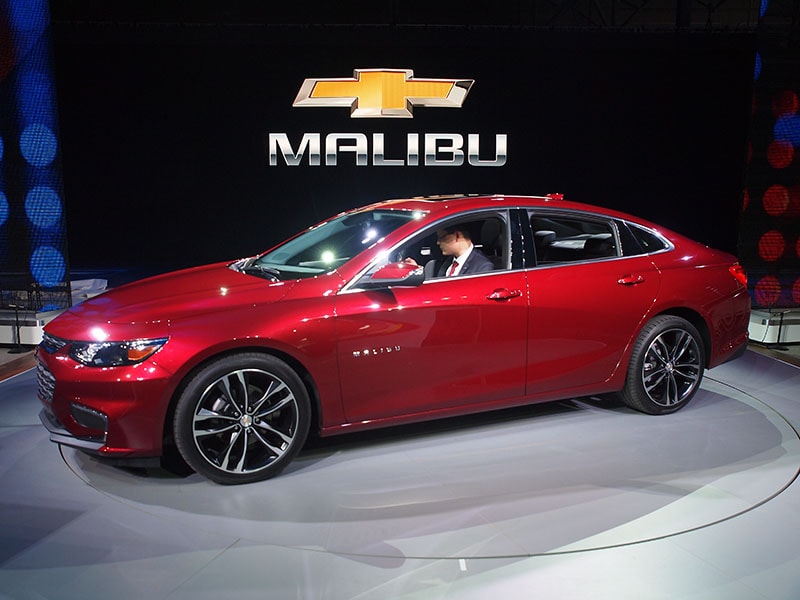
2016 Toyota RAV4 Hybrid
Joining the redesigned standard Malibu mid-size sedan is the all-new 2016 Chevrolet Malibu Hybrid. A more advanced 182 horsepower, 1.8-liter four-cylinder gasoline/electric powertrain borrowed in part from the Chevrolet Volt highlights ensures startling fuel mileage for the four-door family car, which is rated at 48-mpg in city driving and 45-mpg on the highway (for a total of 47-mpg combined). This would put the Malibu Hybrid at the top of the non-plug-in mid-size class, although you have to wonder if a wall-socket-friendly version of the car isn't coming soon given its Volt roots. Like the gas-only version of the car, the Malibu Hybrid is larger and more stylish than the 2015 model.
What’s changed The Malibu Hybrid is all-new for the 2016 model year, and posts class-best fuel mileage.
When is it available? Third quarter of 2015.
How much? Pricing has yet to be released for the 2016 Chevrolet Malibu Hybrid.
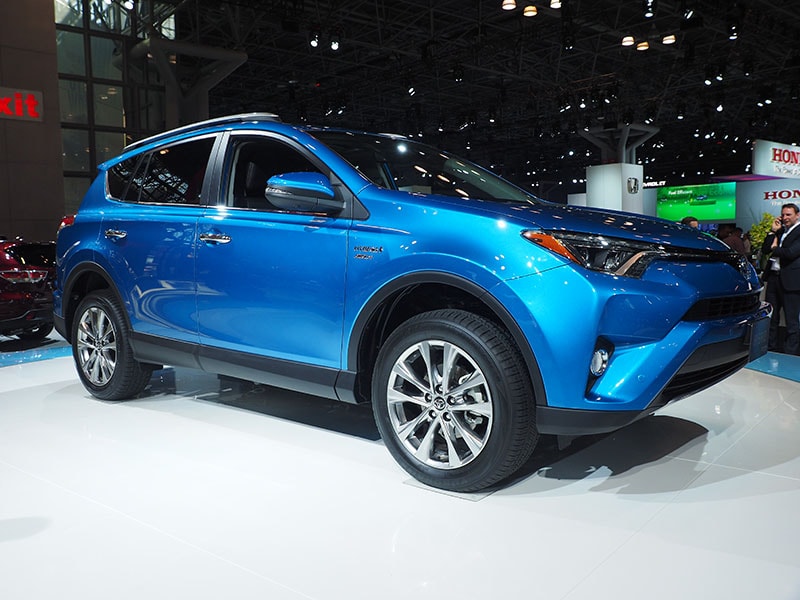
Photo by Megan Green